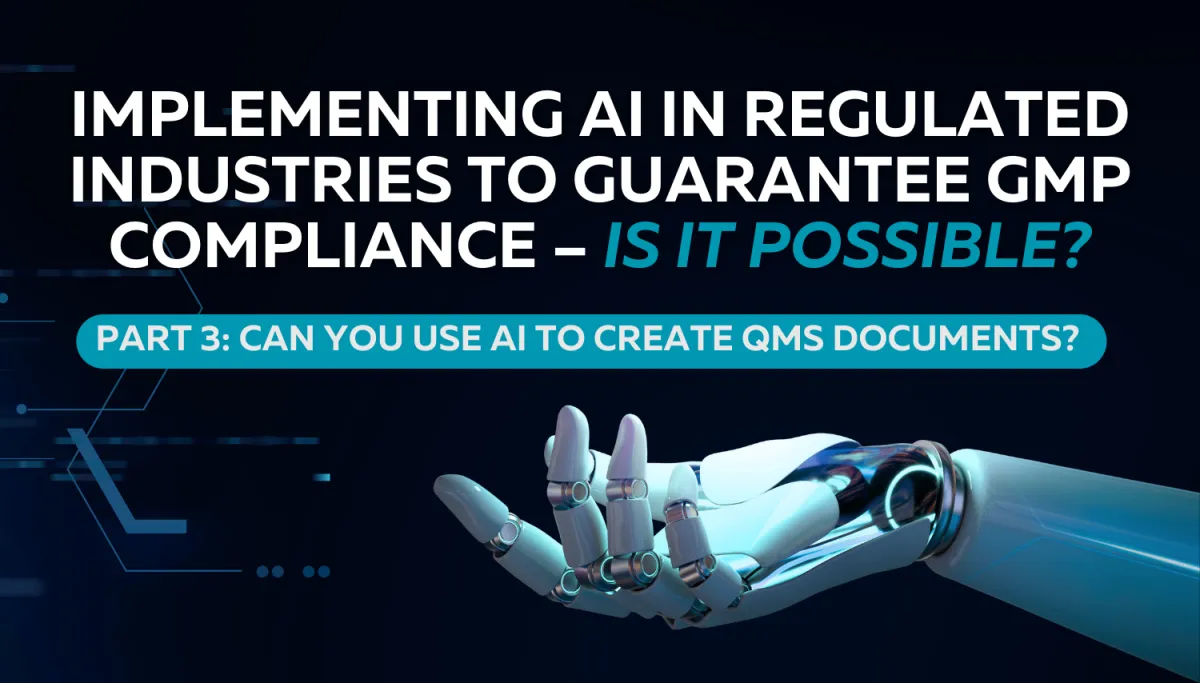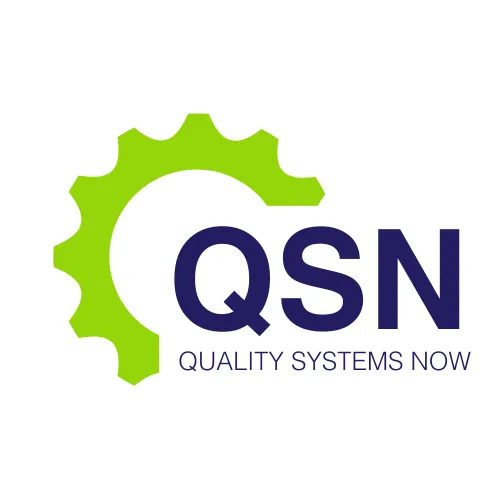LATEST NEWS

Implementing AI in Regulated Industries to Guarantee GMP Compliance – Is it Possible? Part 3. Can you use AI to Create QMS Documents?
I have had discussions with some industry professionals about the viability of using a company AI algorithm to generate QMS documents. These conversations are usually triggered by managers who get frustrated with the genuine time it takes to generate well-written(ish) documents. They want to reduce the time and budget required for documentation in their current project – e.g. new manufacturing line, process, software system or facility.
And it’s almost always the case they have not factored into their project plan the real time and skill set it takes to get documents drafted, reviewed and approved that integrate with the rest of the QMS. The underlying mindset here is,
“It’s just documentation, it’s not as important as X or Y in my project”. Or,
“It will just happen in parallel with other tasks.”
This is the tick-in-the-box mentality often seen when it comes to misunderstanding the value of the QMS.
Can you just use ChatGPT?
If you were so dismayed by your personnel’s ability to write documents (and surely this is part of their role anyway), potentially you could just get a Chat GPT account, feed it specific company data, and get a starting document of process X of Y.
BUT… what does it gain you?
Certainly not time, because the output then has to be transferred into your QMS templates, specific company details added, and how do you know that it’s got it right? The preparer would need to thoroughly proof the document to make sure that it was accurate for your:
Facility layout
Company language
Equipment setup
Validation settings and outputs (hello!).
You might as well get the preparer to start the document from scratch. Maybe then put it through the algorithm to clean it up is more sensible. But then, it must still go through review and approval as per normal QMS and GxP requirements. So, you actually ADD a step in the documentation processes.
And would your IT department allow you to have ChatGPT on your work computer in the first place? Doubtful in a GMP environment.
The real issue in this scenario is that QMS documents are not factored into implementation plans; they are just an after-thought. So, mitigating this outcome is not to cut another corner with ChatGPT, but to raise the value of the QMS within the business and train both managers and preparers. And if your SMEs are not good writers, then onboard some tech writers to work with them – up front, not after the fact.
What about…
Could you create your own internal algorithm for creating GxP QMS documents? Probably, but what does it really gain if the document has to still go through all the current stages of preparation?
Could you create an algorithm used to check consistency of documents with the rest of the QMS? Yes! I think that could work. It would help remove duplication or contradiction across procedures, validation documents, specifications, records etc. It could also be very useful in ensuring accurate cross-referencing. You could use this once the document is finalised but not approved. And it should give QA much more confidence in the QMS – which is the underlying premise for release for supply.
This approach is also moving into the area of reviewing large data sets – think quality systems like deviations / non-conformance, CAPA, complaints, OOS – looking for trends that we may not see using traditional methods. And how useful would that be for your Product Quality Reviews!
Conclusions
Hopefully, this three-part blog series has given you more insight into the potential and the hindrances facing AI in the pharmaceutical and medical device industries if we are to maintain our current standard of GxP as well as innovate with AI, and all the potential benefits it could bring.
In case you missed any of the articles the links to Part 1 and 2 are below:
